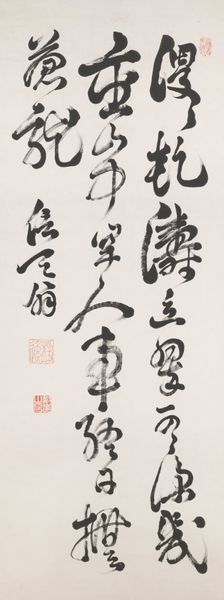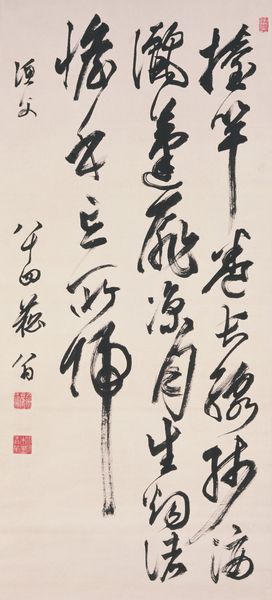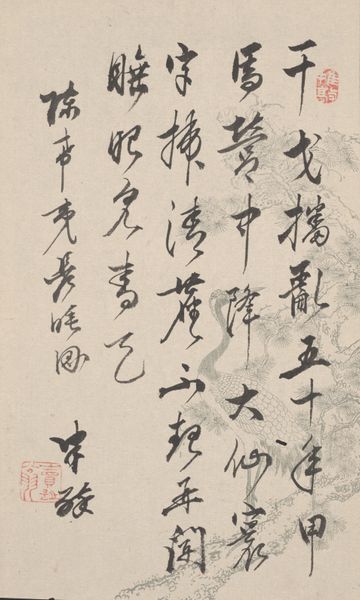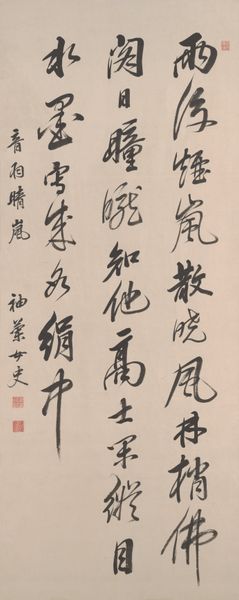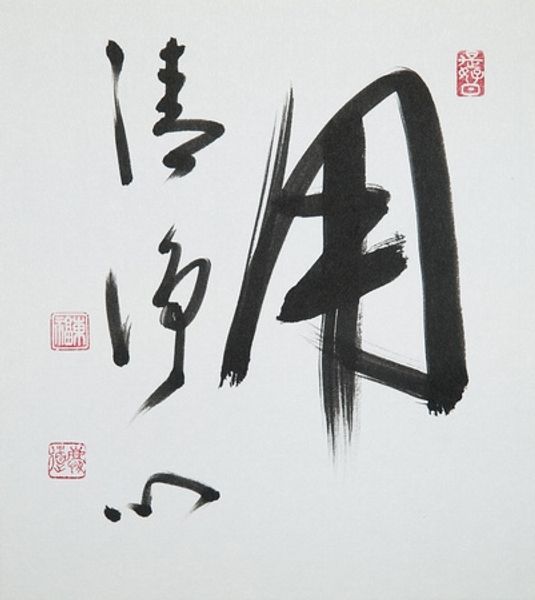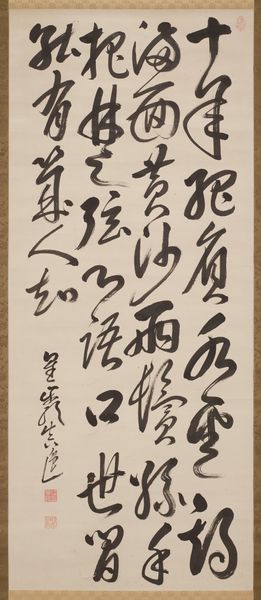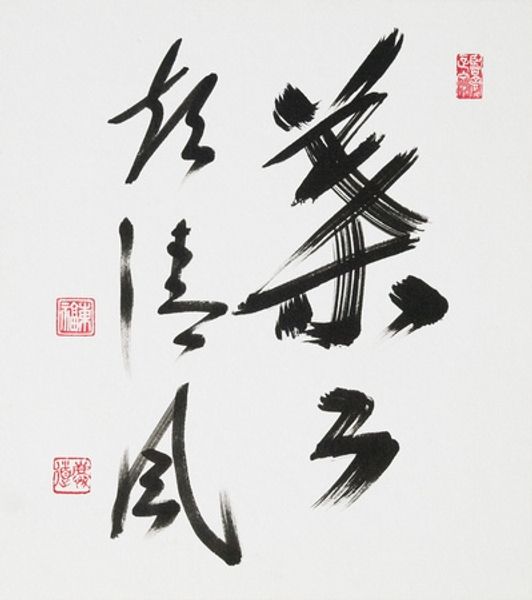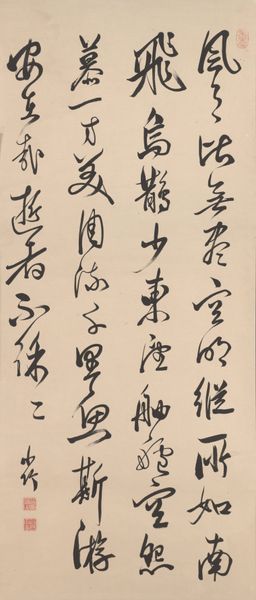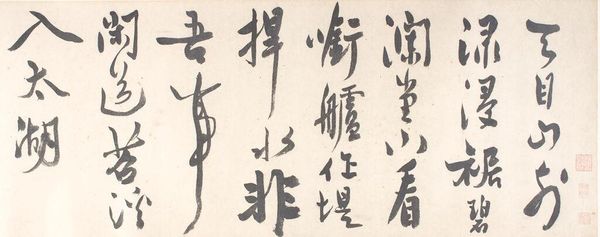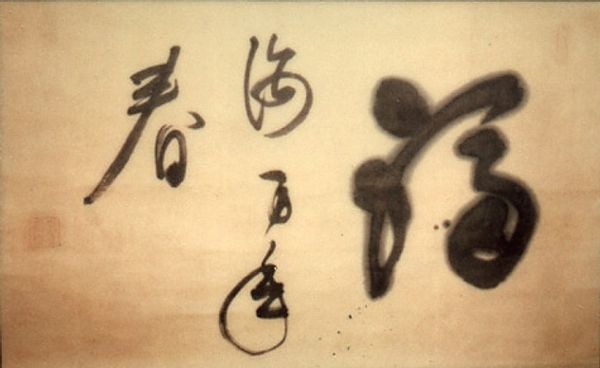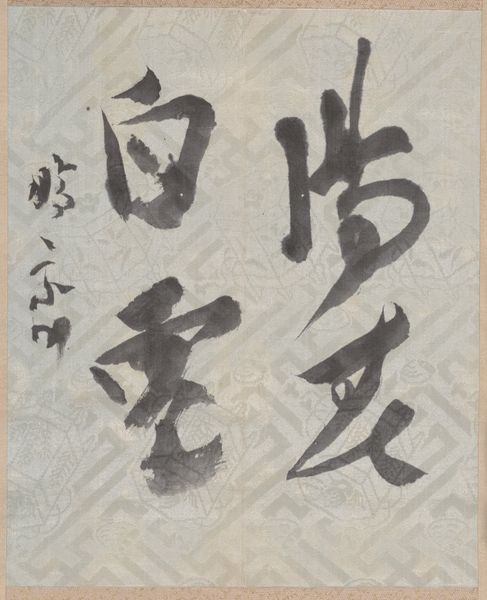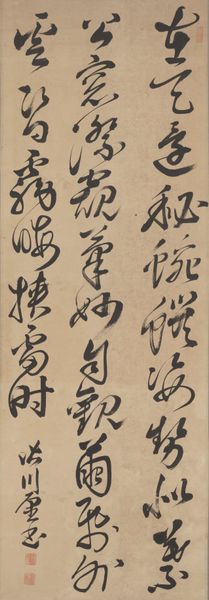
drawing, paper, ink
#
drawing
#
calligraphy
#
asian-art
#
paper
#
ink
#
line
#
calligraphy
Dimensions: 70 5/16 × 18 1/4 in. (178.59 × 46.36 cm) (image)88 3/4 × 23 15/16 in. (225.43 × 60.8 cm) (mount, without roller)
Copyright: Public Domain
Curator: "Recalling an Imperial Visit" is how we've titled this lovely, rather vertical, piece. Yamanaka Shinten'ō, the artist, brushed it onto paper with ink sometime in the 19th century. It resides here with us, at the Minneapolis Institute of Art. Editor: My immediate feeling? A cascade. It looks like a waterfall of words, flowing down the page. The brushstrokes, particularly the thicker ones, have a real energy to them. They seem to almost leap off the paper. Curator: The linearity is significant, guiding the eye. But more than simply reading from top to bottom, think of it as a cultural conduit. Calligraphy, in its traditional East Asian form, wasn’t simply writing—it was visual poetry, a method for revealing moral character, a display of both artistic skill and cultivated literacy. This specific example may reference an imperial visit to a specific place. Think about how seeing rulers reflected upon both their individual role in governing, and the collective wellbeing. The poem could be seen as both remembrance and auspicious omen. Editor: You're right; there's an inherent symbolism I had initially overlooked! It feels a bit like code, almost...a structured approach to visual art, unlike abstract impressionism, in that it's intentional and has a purpose rooted in cultural context. Curator: Precisely. And the visual weight! Notice the placement of the red seals in the lower area. Those act like anchors, bringing balance and signaling authorship. Seals have long served as assertions of authenticity. Editor: This almost has the air of secret history! Like I'm viewing something that was never meant to be casually seen. I find myself wondering about the 'visit' it mentions, which I like to imagine happened by horse drawn carriage, down a lantern lit forest path. Curator: It's evocative in its visual brevity and rich context. It can draw us in on a number of symbolic registers. Editor: A fleeting impression of something massive—history made visible. Makes me wonder how future generations will receive us, their ancestors! Curator: That is always an essential question to ask ourselves when visiting an artwork, how do we connect it to ourselves? Thank you for that point. Editor: Exactly! Always glad to provide new perspective and insight into how that history still has so much to tell us!
Comments
No comments
Be the first to comment and join the conversation on the ultimate creative platform.
